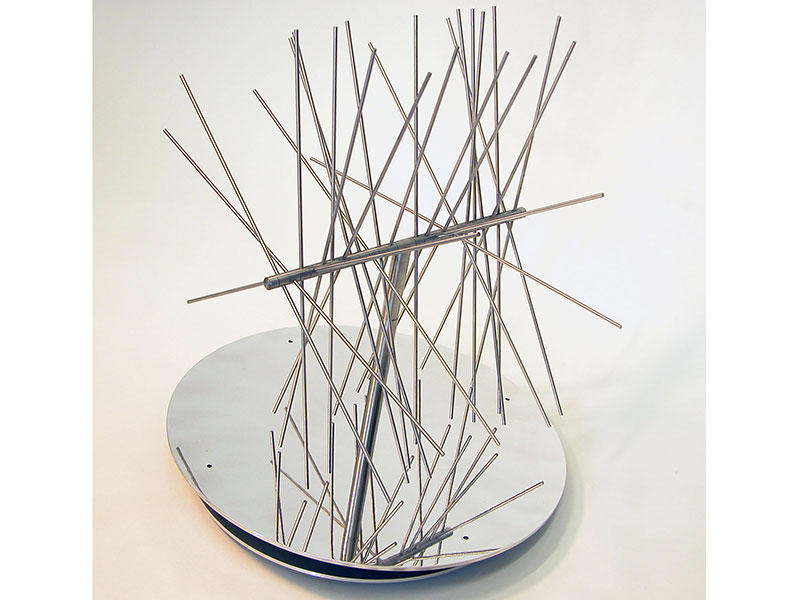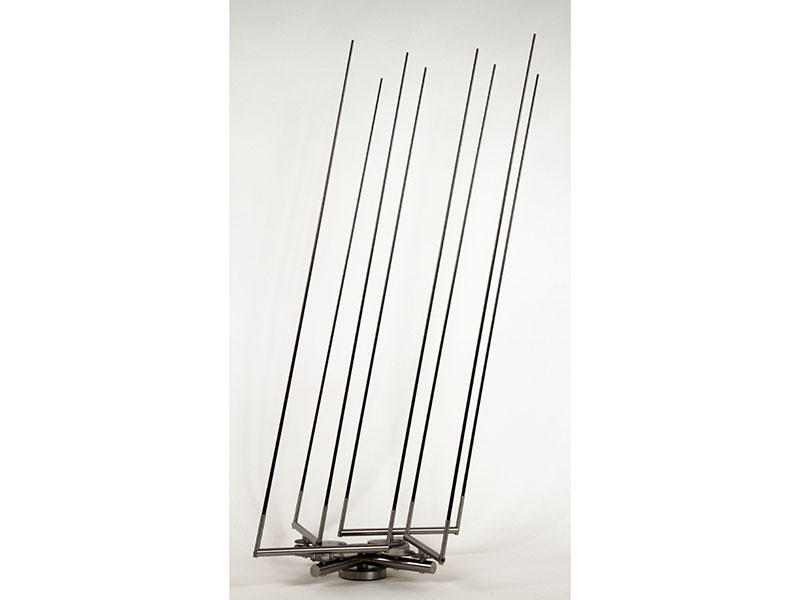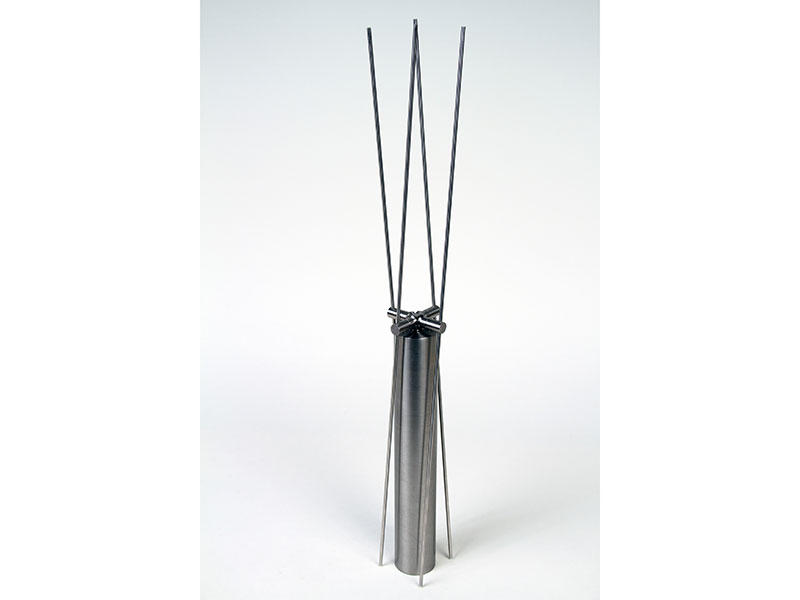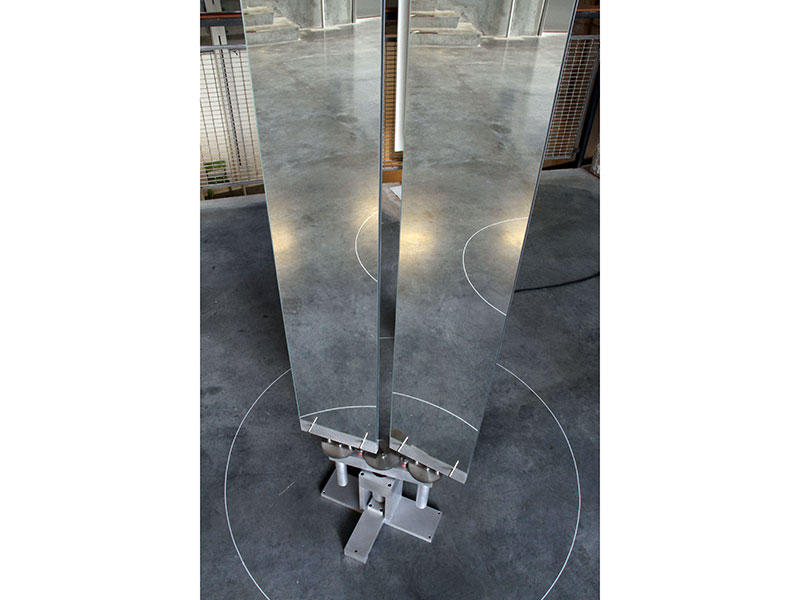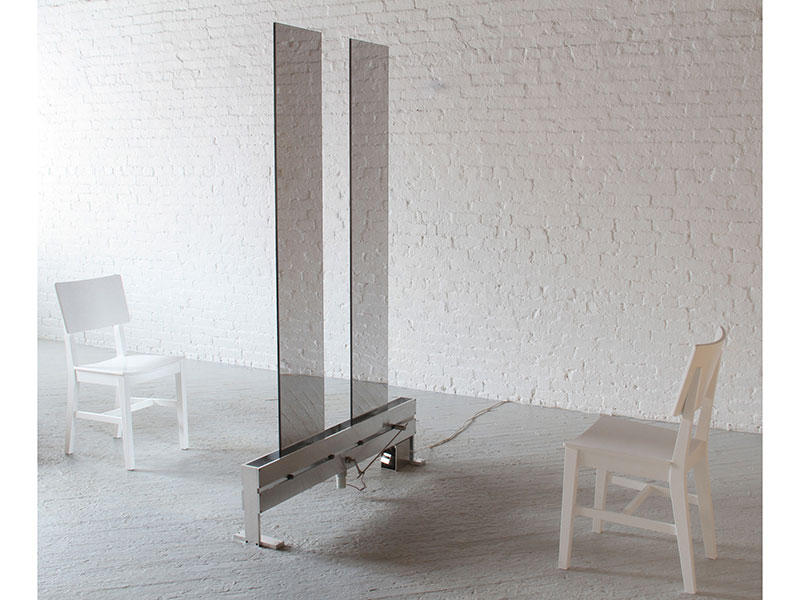The Dynamics of Weaving and Warping Space-Time
Boston based kinetic sculptor and artist Anne Lilly revealed that she rarely starts her process by thinking, she rather simply throws herself into the project and mediates between meticulously analytical and emotionally driven intuitive approaches. Her aim seems to materialize a certain manipulation of our perceptions of time and space. Her gracefully engineered work permits for a haptically mesmerizing space to be created by the shifting pieces and their motion, one that immerses the viewer into a sensuous phenomenological experience.
One does not know in advance how these intricately manufactured and assembled pieces behave, or what their performance is all about. Asking to be touched, the work is only then brought to life. The start is dynamic, calculated, and yet paradoxically graceful. As the energy starts to dissipate a natural attenuation dominates, until the pieces come back to stillness. The materiality of the steel its rigid mass, and customized fabrication is transformed a posteriori. What appears initially as conveying specific traits is altered by a parallax shift. A transformation happens, where the work ceases to be perceived by its materiality, its physical composition, and becomes a sort of metaphysical linkage. What signified structure, infinite oscillation, and identical intervallic performance, seems to act in favor of entropy, and destabilization. An epistemological shift in the viewer’s position, automatically calls for a complimentary ontological displacement of the object. In other words, as the work is touched, and as the elements repeat the action, each component and its relation to the other and to the whole contribute to a differentiated performance. The path of energy is tapered in favor of a transformed perception. The work seems to incorporate itself with the viewer, enabling us to acquire previously unknown percepts.
Of the many captivating and sensuous works she has produced, I will briefly discuss two. Disparate de Tontos (2014) consists of two “Y” shaped forms harmonically intertwining and swaying as if to weave a time and space of their own. Hypnotizingly intriguing, the forking lines asymptotically escape eminent collision, a calculated act of randomness if one ever existed.
In one of her latest work, To Be (2016) Lilly creates an instrument that substitutes itself for the communication and the conjoining of two different bodies. An intricate performance of an actor machine, equipped with reflective surfaces attached to rotating bases that produce a differentiated and generative new perception through the interplay of its mechanisms. A mechanical language sets itself as a new system that unlinks previously established signifiers, the mirror image, the calculated method of symmetrically plotting, seems to malfunction, and produce an impossible conjoint new body. An unexpected disturbance, what was initially perceived as two distinct unrelated people entering a specific space, and moving randomly, are joined, incorporated within the work which now takes center stage as the actor of impossibility.
